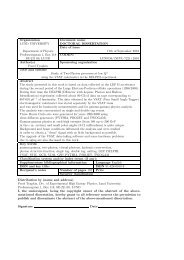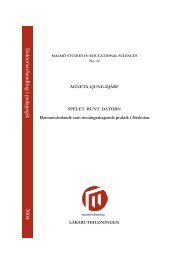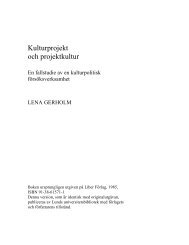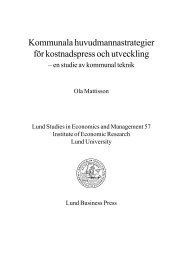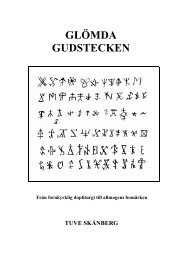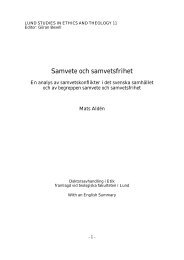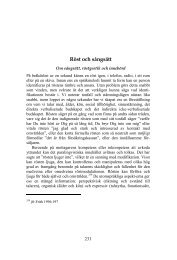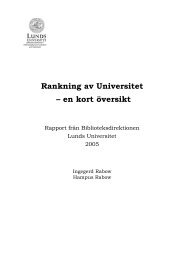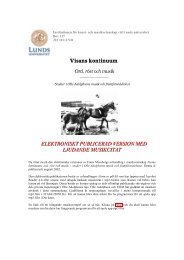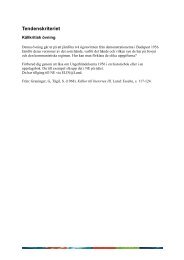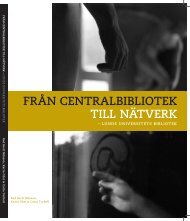Hyperpolarized Nuclei for NMR Imaging and Spectroscopy - Lunds ...
Hyperpolarized Nuclei for NMR Imaging and Spectroscopy - Lunds ...
Hyperpolarized Nuclei for NMR Imaging and Spectroscopy - Lunds ...
Create successful ePaper yourself
Turn your PDF publications into a flip-book with our unique Google optimized e-Paper software.
of interest, the applied magnetic field strength B 0, <strong>and</strong> the volumes of the<br />
RF coil <strong>and</strong> the subject, but the results will differ depending on whether hyperpolarized<br />
or non-hyperpolarized substances are used.<br />
By using the principle of reciprocity (Hoult <strong>and</strong> Richards 1976, Insko et<br />
al. 1998), the <strong>NMR</strong> signal voltage, S, across the terminals of the RF coil can<br />
be calculated as:<br />
16<br />
S ∝ γ B PBVS 2<br />
0 1<br />
ˆ . [18]<br />
Here, ˆ B 1 is the B 1 field at unit current through the RF coil <strong>and</strong> V S is the<br />
sample volume. The noise voltage, N, across the terminals of the RF coil<br />
originates both from the coil itself <strong>and</strong> from inductive losses in the sample<br />
(Hoult <strong>and</strong> Lauterbur 1979), <strong>and</strong> can be expressed as<br />
( )<br />
N = 4 k Tb R + R<br />
[19]<br />
B C S<br />
where b is the receiver b<strong>and</strong>width, R C the coil resistance, <strong>and</strong> R S is an<br />
“equivalent sample resistance” (Hoult <strong>and</strong> Lauterbur 1979, Macovski 1996),<br />
modeling the inductive sample losses. For a spherical body <strong>and</strong> a solenoidal<br />
coil, R S is given by<br />
R<br />
S<br />
2 2 2 5<br />
πω µ 0nrS =<br />
. [20]<br />
2 2<br />
30ρ r + l 4<br />
( C C )<br />
Here, r C, l C, <strong>and</strong> n are the radius, the length, <strong>and</strong> the number of turns of<br />
the coil, respectively, r S the sample radius, <strong>and</strong> ρ the resistivity of the sphere.<br />
For the solenoidal coil, the resistance (taking into account the frequencydependent<br />
skin depth δ) <strong>and</strong> ˆ B 1 are given by (Hoult <strong>and</strong> Lauterbur 1979)<br />
2<br />
3σρCnrC RC<br />
= ,<br />
δlC<br />
δ =<br />
2ρC<br />
µµ 0ω<br />
Bˆ<br />
1 =<br />
2<br />
nµ<br />
0<br />
2 2<br />
r + l 4<br />
C C<br />
[21]<br />
where σ is a proximity effect factor (typically 3–6 (Austin 1934)), <strong>and</strong> ρ C <strong>and</strong><br />
µ are the resistivity <strong>and</strong> relative permeability of the coil material. The calculation<br />
of R C is valid as long as δ is smaller than the radius of the coil wire,



